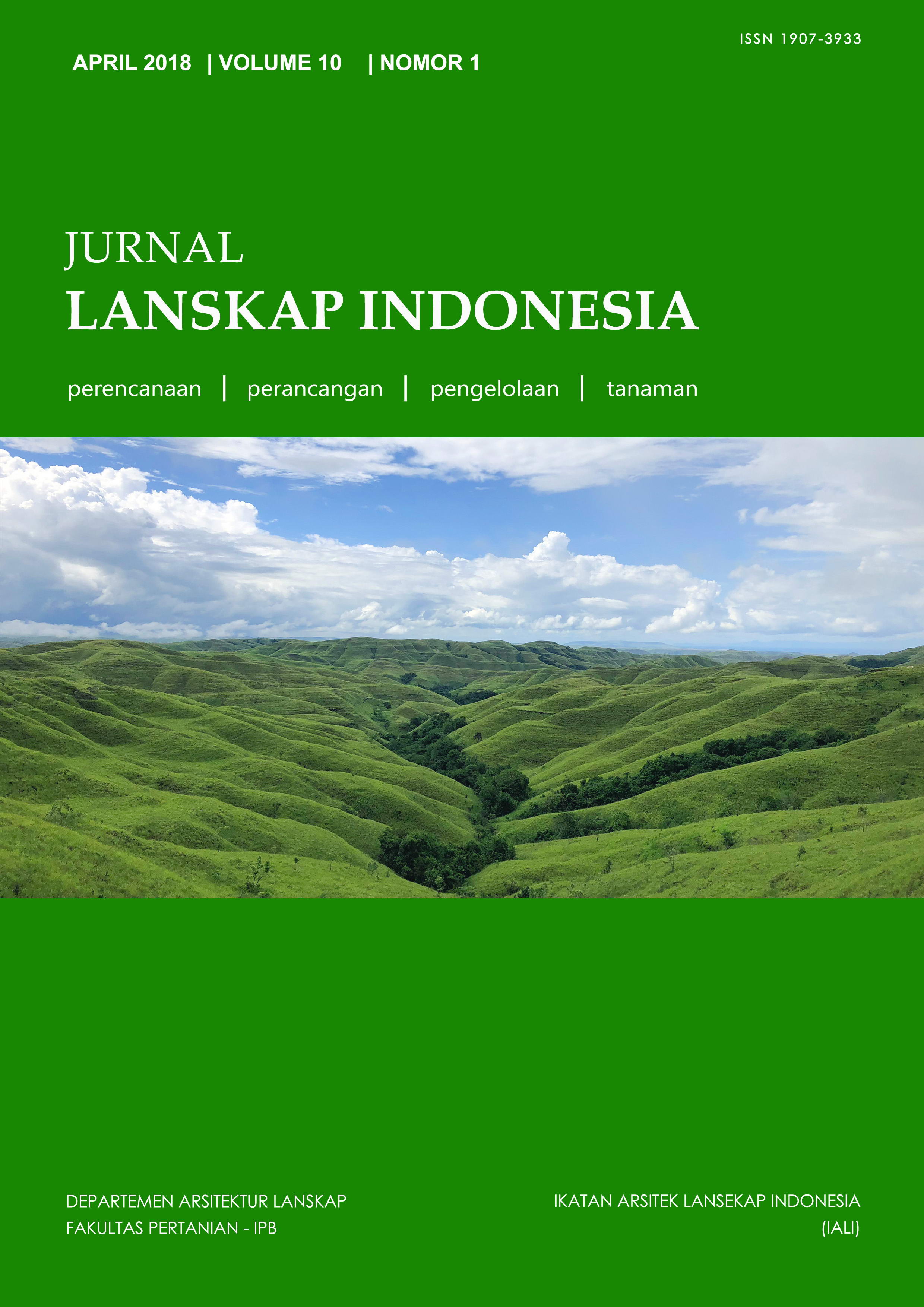KAJIAN POTENSI KOLEKSI POHON LOKAL KEBUN RAYA CIBODAS UNTUK FUNGSI ESTETIKA DALAM LANSKAP
Abstract
Trees in the landscape have many important roles, one of them is aesthetics function. Therefore, tree species selection must be considered well. Indonesia has big number of tree biodiversity that can use for tree selection purposes. The selection can be considered based on physical characteristics and ecological characteristics of the tree species. Therefore, purposes of this study are 1) to identify ecological distribution of native tree species in Java island, 2) to identify native tree species which have high aesthetic value, and 3) to arrange native tree species list that have potential to be developed for aesthetic use in the landscape. This study conducted in Cibodas Botanical Garden. The method used for this research is literature study from Botanical Garden Catalogue, direct survey method, aesthetic analyze using Key Performance Index for aesthetic quality assessment. The results of this research is there are 223 Java Island native tree species collection in Cibodas Botanical Garden. The habitat of these collections of tree species is evenly distributed throughout the island of Java. Most can grow well in tropical zones (0-1000 masl) and tropical-mountain zones (0-2400 masl). Based on the aesthetic criteria assessment there are 50 species belonging to the good category, 101 species are included in the moderate category, and only one species is categorized as bad.
Downloads
This journal permits and encourages authors to post items submitted to the journal on personal websites or institutional repositories both prior to and after publication, while providing bibliographic details that credit, if applicable, its publication in this journal. However, after the article is submitted and published in this journal, it is fully copyrighted by the Jurnal Lanskap Indonesia or JLI. If excerpts from other copyrighted works are included, the author must obtain written permission from the copyright owner and give credit to the source in the article. Then, the writer or reader is allowed to copy, share, and redistribute articles/material in any form. But it must still include the appropriate source and credit because the article in this journal is licensed by Creative Commons Attribution 4.0 International License (CC BY 4.0).
I. Proposed Policy for Journals That Offer Open Access
Authors who publish with this journal agree to the following terms:
- Authors retain copyright and grant the journal right of first publication with the work simultaneously licensed under a Creative Commons Attribution License that allows others to share the work with an acknowledgement of the work's authorship and initial publication in this journal.
- Authors are able to enter into separate, additional contractual arrangements for the non-exclusive distribution of the journal's published version of the work (e.g., post it to an institutional repository or publish it in a book), with an acknowledgement of its initial publication in this journal.
- Authors are permitted and encouraged to post their work online (e.g., in institutional repositories or on their website) prior to and during the submission process, as it can lead to productive exchanges, as well as earlier and greater citation of published work (See The Effect of Open Access).
II. Proposed Policy for Journals That Offer Delayed Open Access
Authors who publish with this journal agree to the following terms:
- Authors retain copyright and grant the journal right of first publication, with the work after publication simultaneously licensed under a Creative Commons Attribution License that allows others to share the work with an acknowledgement of the work's authorship and initial publication in this journal.
- Authors are able to enter into separate, additional contractual arrangements for the non-exclusive distribution of the journal's published version of the work (e.g., post it to an institutional repository or publish it in a book), with an acknowledgement of its initial publication in this journal.
- Authors are permitted and encouraged to post their work online (e.g., in institutional repositories or on their website) prior to and during the submission process, as it can lead to productive exchanges, as well as earlier and greater citation of published work (See The Effect of Open Access).



























